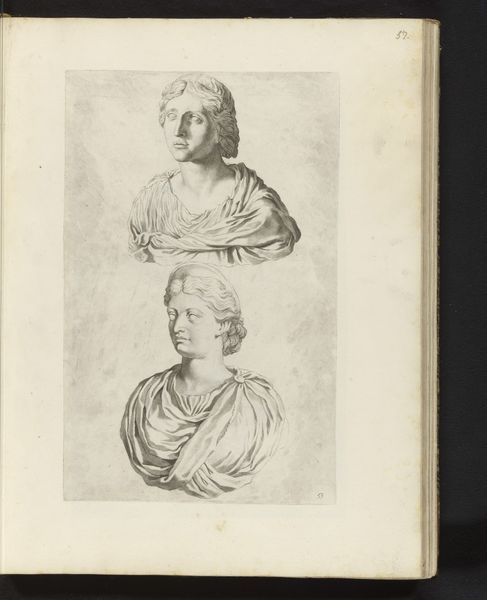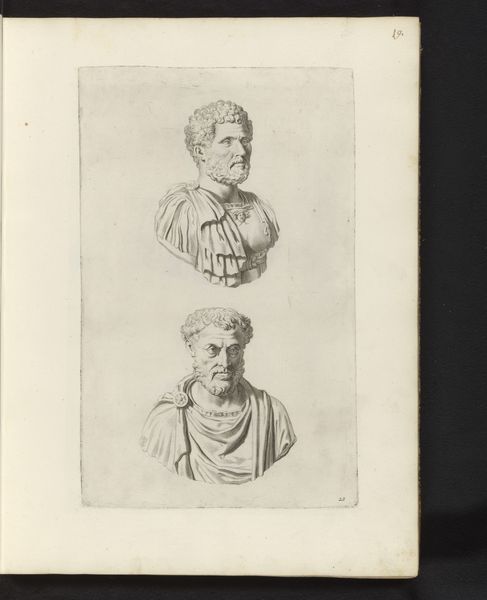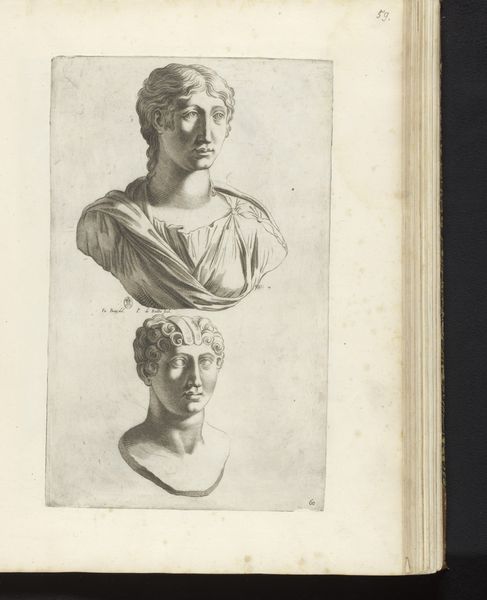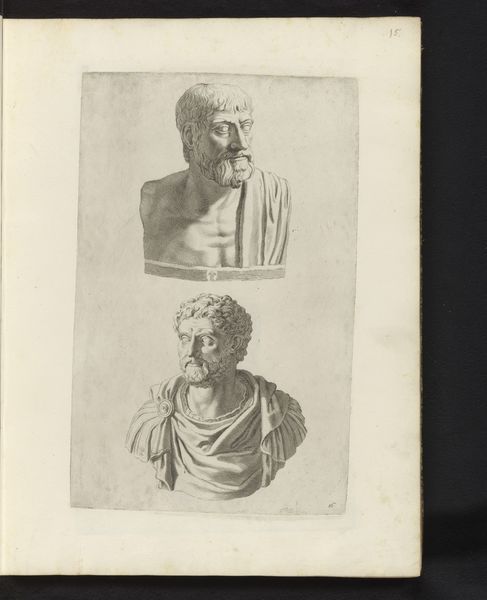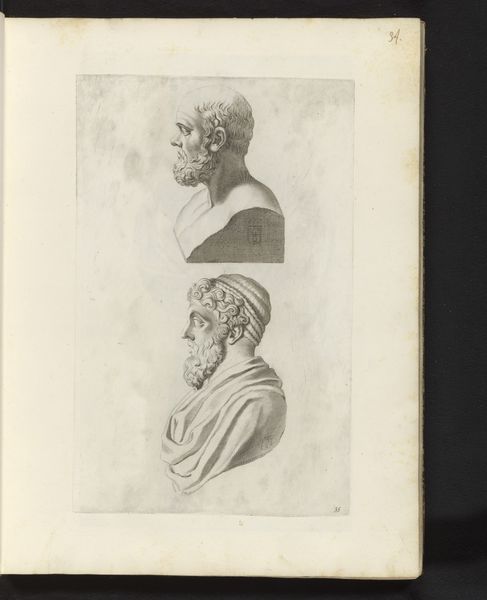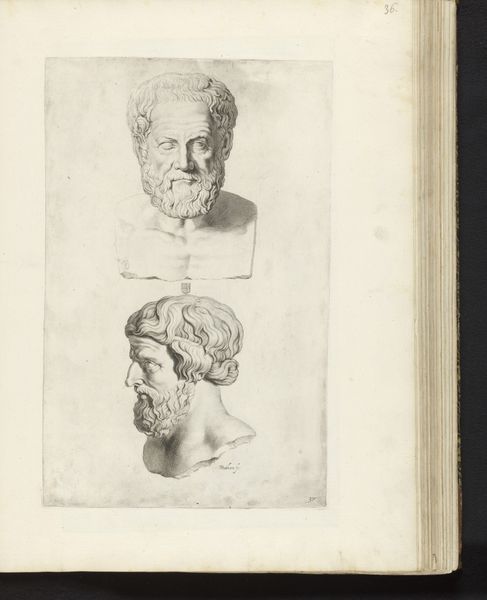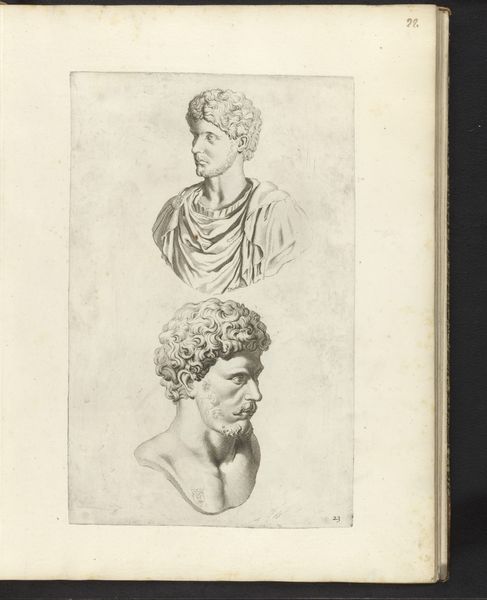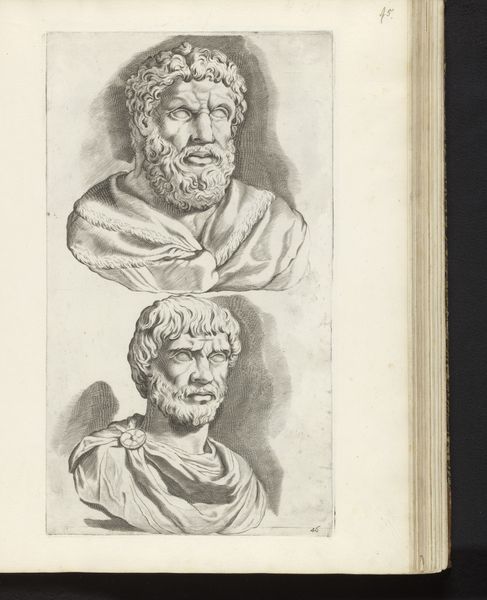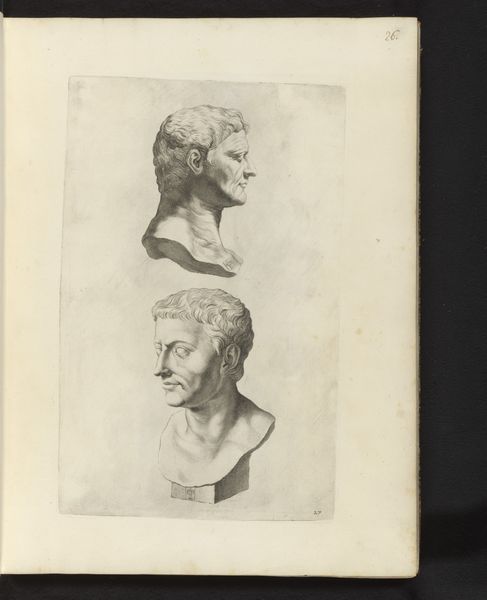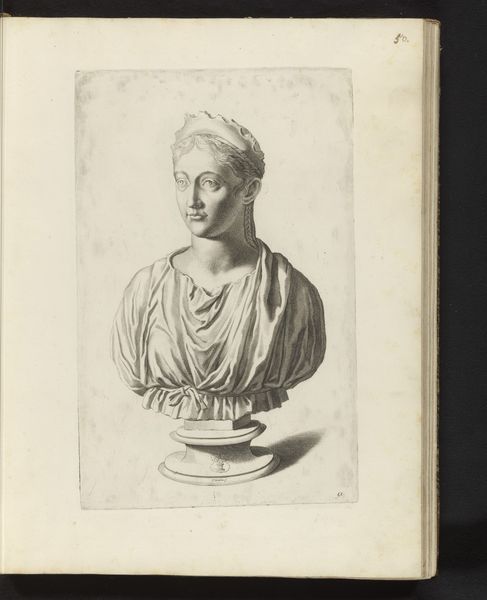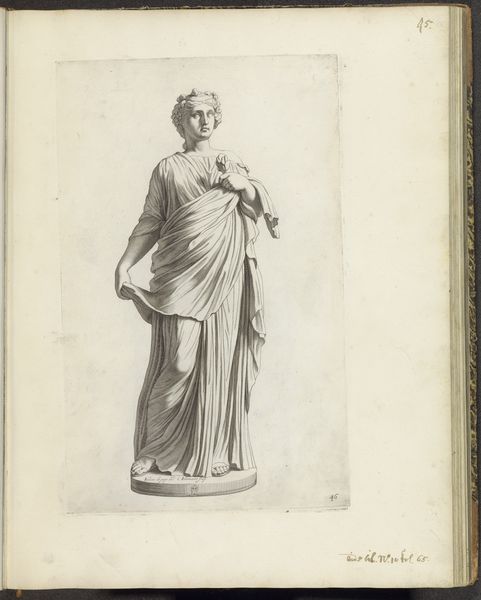
drawing, pencil
#
portrait
#
drawing
#
light pencil work
#
baroque
#
pencil sketch
#
greek-and-roman-art
#
sketch book
#
personal sketchbook
#
idea generation sketch
#
sketchwork
#
pen-ink sketch
#
pencil
#
sketchbook drawing
#
storyboard and sketchbook work
#
sketchbook art
Dimensions: height 367 mm, width 233 mm
Copyright: Rijks Museum: Open Domain
Theodor Matham made this print, Busts of Crispina and Lucilla, sometime in the 17th century in the Netherlands. He was an engraver who likely produced this image for a print collection, maybe even an illustrated book. The image shows two Roman women; Crispina and Lucilla. They were both wives of Roman Emperors, and Matham’s image evokes the imagery of the Roman Empire. But why would a Dutch artist in the 17th century look back to ancient Rome? The Dutch Republic was a new and rising power at this time. It had only recently gained independence after a long struggle against the Spanish Empire. As such, its artists often looked to other empires for inspiration. Rome was a key source for this, as a point of reference for the institutions of power. This wasn't unique to the Dutch; elites across Europe also looked to the art and architecture of the Roman Empire for their own social and political purposes. To fully understand artworks like this, historians often look to the social context in which they were made. We can start by researching the artist, the patrons, the institutions that commissioned the work, and the audience who viewed it. All these factors help us to understand what the image meant in its own time.
Comments
No comments
Be the first to comment and join the conversation on the ultimate creative platform.
